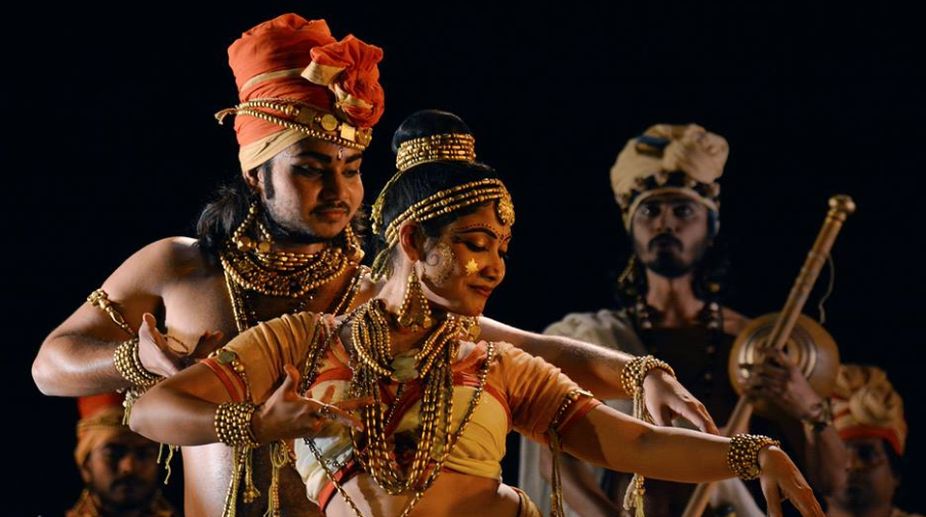South Africa seeks to prevent auction of Nelson Mandela items
The South African Heritage Resources Agency (SAHRA) has said that it will continue its fight to prevent a proposed online auction of Nelson Mandela's personal belongings.

(Photo: Facebook)
Kalamandalam Piyal Bhattacharya has dedicated himself to reviving Bharata Muni’s tradition of nritta, geeta, abhinaya and has devised a method of Natya training. For more than 18 years, he has been deeply researching the core texts of Bharata Muni’s Natya Sashtra alongside the study of Abhinava Bharati, which is a commentary on the Natya Sashtra by Acharya Abhinava Gupta.
He is thus in the process of reconstructing and developing a complete system of ancient performances on the proscenium stage of contemporary times. He is desirous of moving towards more subtle thinking and ecstatic experience in order to rise above the ordinary.
Bhattacharya’s noble endeavour came to the notice of the Ministry of Culture, Government of India, which conferred upon him a fellowship in 2011. Prior to that, he was the recipient of a fellowship in 2010 from Sangeet Natak Akademi. Bhattacharya’s path-breaking work has won him the prestigious grant for “Safe Guarding the intangible Cultural Heritage of India” in 2014-15. In 2015- 16 Sangeet Natak Akademi gave him financial support for the reconstruction of ancient Indian veenas (harps) from Myanmar.
Advertisement
Furthermore the practice of Marga Natya has come under the gurusishya parampara scheme from the drama section of Sangeet Natak Akademi in 2016-17.
Bhattacharya’s relentless search has revealed to him that wisdom or “marga” has no beginning or end. It is therefore “anadi” or eternal. He therefore has chosen the name Marga Natya to unfold the reality of music, dance and acting, which manifests in the entire cosmos.
Tapan Theatre in Kolkata was chocka-block with people to see Marga Natya being performed. They presented Chitra Poorva Ranga, which demonstrated a special way of showcasing ritualistic purviews by including within the song, instrumental music and dance. The body of the dancer was the offering or naivadya. Nirgita Vidhi in Chitra Poorva Ranga consisting of meaningless special syllables as mentioned in the Natya Sashtra was rendered first to the accompaniment of Mattakokila Veena or 21- stringed Indian arched harp and Kachchhapi Veena or ancient Indian fivestringed lute.
That was followed by Asarita Vardhamana Vidhi, which is restricted with specific rules. It is very close to today’s Mangalcharan, an invocation to continue with the positive aspect that governs the universe. After that Upa-Rupaka Bhanakawas performed. It was anukirtana or re-telling of the story of all that was said by the Acharyas before him. Bhattacharya’s Bhanaka was Shaivite rendered in a number of languages. It was used as a passage to ecstasy or “ananda”. Constantly the Sutradhhar kept schooling the audience.
The ensuing sapta kapala geets sung in seven shuddha jatis enamoured the rasikas. Three dancers performed as Devis representing the cosmic embodiments of energy, deeply embedded in musical notes, rhythm and literature. Chitra Poorva Ranga came before the presentation of natyaor drama.
At every point the Sutradhaar kept explaining. Natya made way for Vedan, which was performed next. It explained how the Natyasashtric era gradually transformed during the medieval period, when Rudra Veena and Ektantri Veena were used. The Sutradhhar took on the role of the lover playing the Rudra Veena and became the consort of Ambhrini vaak from the earlier performance of Bhanaka. That showed the gradual transformation of a system coming closer to the hearts of the people. What followed after were scriptural references of kavyas of Kalidasa along with natikas and padas of Ratnavali, Vidyapati and Gobinda Das. There were verses from Bengali poets as well.
The performance concluded with a benediction of happiness and joy to people and balance of Agni-soma in the environment. Akash Mallick, Pinki Mondal, Dipan Maitra, Deep Ghoshal and Manjusree Dey were no run-of-the-mill performers. Their suppleness along with their total involvement had a story to tell. Rinki Mondal excelled in nritta, abhinaya and in keeping tala. Not for nothing did Sayal Mitra burn his midnight lamp —he was an able Sutradhaar. He was left to dance, chant as well as guide the audience to understand Bhattacharya’s new concept at every step.
He was the vocalist too just as Manjima Dey was. Sukhendhu Ghosh played the Mattakokila Veena while Abhijeet Ray played Kachchhapi Veena. Moumita Sankhari accompanied the performance with Vakra Veena. Bharata’s system of Mridanga was played by Mithun Chakraborty. Jaoy Dala was at the Panava and Piyal Bhattacharya, the Director of Marga Natya, used the dardura as an accompaniment.
Chhandak Jana and Soumen Chakraborty were in charge of costumes and stage lighting respectively. Amarendranath Dutta fulfilled the very important task of photographing the whole production for posterity.
Advertisement